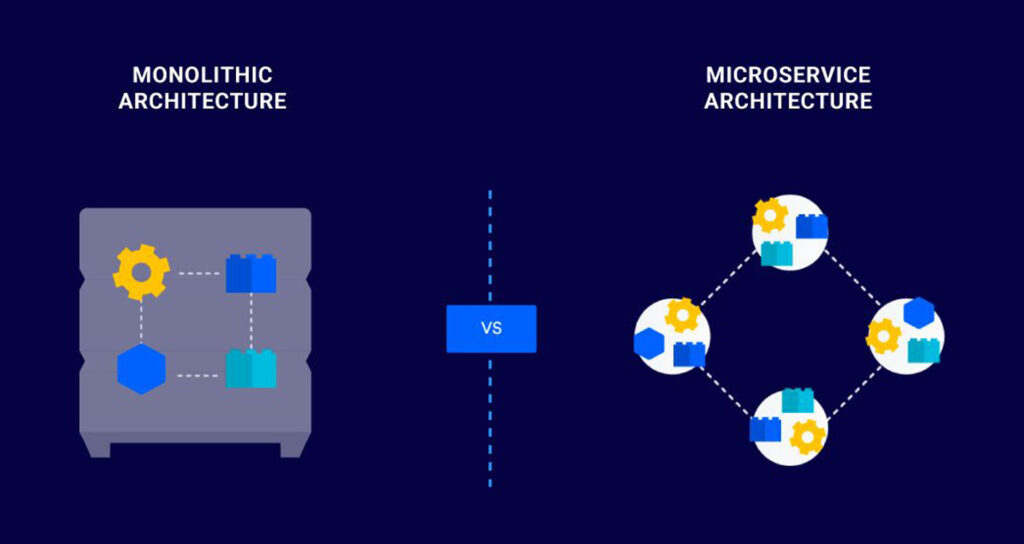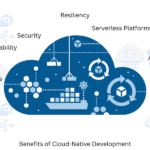
As businesses strive for greater agility, scalability, and efficiency, software architecture plays a crucial role in determining how applications are built, deployed, and maintained. Traditionally, monolithic architectures have dominated software development, providing a single, unified codebase for applications. However, with the rise of cloud computing and DevOps practices, microservices architecture has gained traction, offering a modular, decentralized approach to application development. From a DevOps perspective, the choice between monolithic and microservices architectures significantly impacts deployment speed, scalability, and overall operational efficiency.
Understanding Monolithic Architecture
Monolithic architecture follows a traditional approach where an entire application is developed as a single, unified codebase. This means that all components—including the user interface, business logic, and database—are tightly integrated and deployed together.
For small-scale applications, monolithic architectures are often easier to develop, test, and deploy. With a single repository, developers can maintain consistency and ensure all features work together seamlessly. However, as applications grow in complexity, monolithic structures can become difficult to scale and modify. A single change to one component often requires rebuilding and redeploying the entire application, making development cycles longer and less flexible.
From a DevOps standpoint, monolithic architectures pose challenges in continuous integration and deployment (CI/CD). Because all components are interdependent, a single failure can disrupt the entire system, increasing downtime and making troubleshooting more complex. Additionally, scaling monolithic applications requires duplicating the entire system rather than scaling individual services, leading to inefficient resource utilization.
The Rise of Microservices Architecture
Microservices architecture, on the other hand, breaks down applications into smaller, independent services that communicate through APIs. Each service is designed to perform a specific function and can be developed, tested, and deployed independently. This modular approach aligns closely with DevOps principles, promoting agility, automation, and continuous delivery.
One of the key advantages of microservices is scalability. Unlike monolithic applications, where scaling requires duplicating the entire system, microservices allow individual services to scale based on demand. This means that high-traffic components can be independently scaled without affecting the rest of the application, optimizing cloud resources and reducing operational costs.
Microservices also enhance DevOps practices by enabling faster deployments and minimizing risks. Since each service operates independently, developers can release updates without disrupting the entire system. This allows teams to adopt CI/CD pipelines more effectively, leading to quicker feature rollouts, bug fixes, and improved resilience.
DevOps Challenges and Considerations
While microservices offer significant advantages, they also introduce complexities that must be managed effectively. One of the biggest challenges is service orchestration. Unlike monolithic applications, where everything is centralized, microservices require robust service discovery mechanisms and communication protocols, often using Kubernetes or API gateways.
Another challenge is observability. With multiple independent services running simultaneously, tracking performance, debugging issues, and monitoring logs require advanced observability tools. DevOps teams must implement centralized logging, distributed tracing, and monitoring solutions to gain visibility into microservices interactions and ensure reliability.
Security is also a critical factor in microservices adoption. Unlike monolithic applications, which operate within a single security boundary, microservices interact over networks, increasing the attack surface. DevOps teams must implement strong authentication, encryption, and API security measures to protect data and prevent breaches.
When to Choose Monolithic vs. Microservices?
The choice between monolithic and microservices architectures depends on various factors, including business needs, development team expertise, and scalability requirements.
- Monolithic architectures are ideal for small to medium-sized applications with simple functionalities and limited scaling requirements. If the development team is small and prefers a centralized codebase with fewer dependencies, a monolithic approach may be the best choice.
- Microservices architectures are more suitable for large-scale applications requiring rapid updates, scalability, and modular development. If the organization follows DevOps practices and aims for cloud-native deployments, microservices provide the flexibility needed for agile development and continuous delivery.
Conclusion: The Future of Software Development
Both monolithic and microservices architectures have their place in modern software development. While monolithic applications offer simplicity and ease of development, microservices provide scalability, resilience, and faster innovation. From a DevOps perspective, microservices align more closely with automation, CI/CD, and cloud-native principles, making them the preferred choice for organizations looking to scale efficiently.
As businesses continue to evolve, adopting the right architecture depends on their long-term goals, operational requirements, and DevOps maturity. The key is to balance complexity with efficiency, ensuring that the chosen approach maximizes performance, security, and agility in today’s fast-paced digital landscape.
Follow us for more Updates














